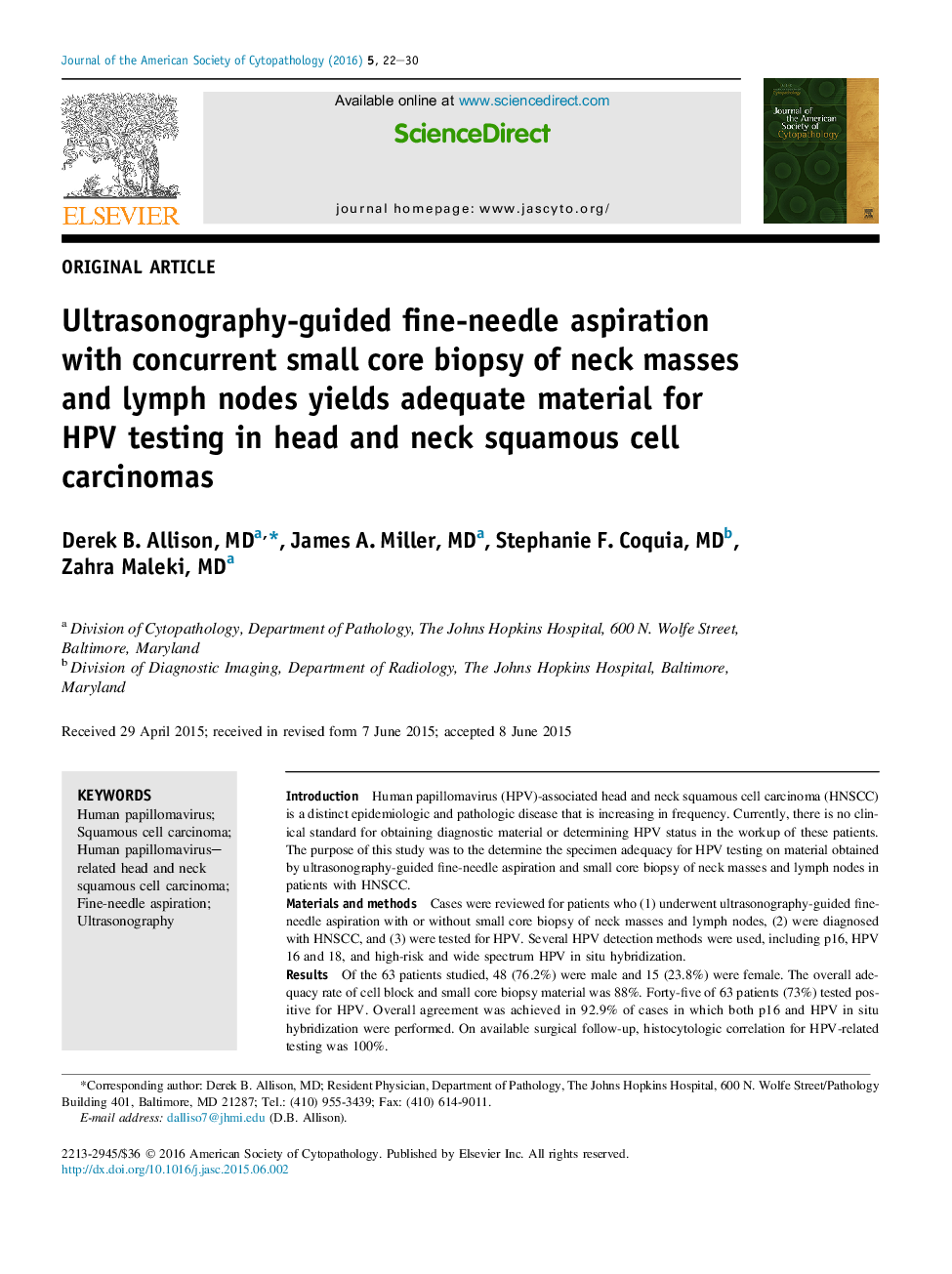| Article ID | Journal | Published Year | Pages | File Type |
|---|---|---|---|---|
| 2776551 | Journal of the American Society of Cytopathology | 2016 | 9 Pages |
IntroductionHuman papillomavirus (HPV)-associated head and neck squamous cell carcinoma (HNSCC) is a distinct epidemiologic and pathologic disease that is increasing in frequency. Currently, there is no clinical standard for obtaining diagnostic material or determining HPV status in the workup of these patients. The purpose of this study was to the determine the specimen adequacy for HPV testing on material obtained by ultrasonography-guided fine-needle aspiration and small core biopsy of neck masses and lymph nodes in patients with HNSCC.Materials and methodsCases were reviewed for patients who (1) underwent ultrasonography-guided fine-needle aspiration with or without small core biopsy of neck masses and lymph nodes, (2) were diagnosed with HNSCC, and (3) were tested for HPV. Several HPV detection methods were used, including p16, HPV 16 and 18, and high-risk and wide spectrum HPV in situ hybridization.ResultsOf the 63 patients studied, 48 (76.2%) were male and 15 (23.8%) were female. The overall adequacy rate of cell block and small core biopsy material was 88%. Forty-five of 63 patients (73%) tested positive for HPV. Overall agreement was achieved in 92.9% of cases in which both p16 and HPV in situ hybridization were performed. On available surgical follow-up, histocytologic correlation for HPV-related testing was 100%.ConclusionsUltrasonography-guided fine-needle aspiration with concurrent small core biopsy of neck masses and lymph nodes, along with on-site evaluation by a pathologist, yields adequate material for reliable HPV-related testing in HNSCC and should be incorporated into the routine pathologic evaluation for these patients.
